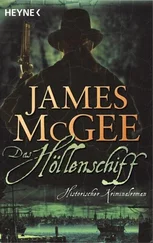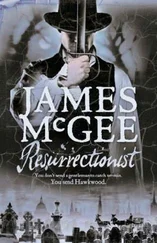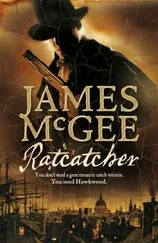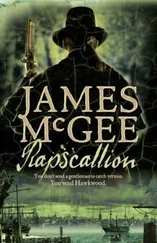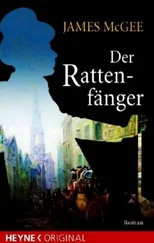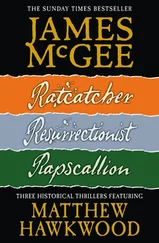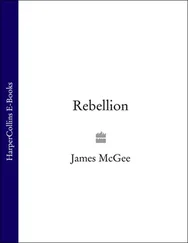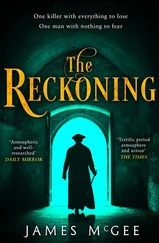
Dedication Dedication Map Mohawk Names Epigraph Prologue Chapter 1 Chapter 2 Chapter 3 Chapter 4 Chapter 5 Chapter 6 Chapter 7 Chapter 8 Chapter 9 Chapter 10 Chapter 11 Chapter 12 Chapter 13 Chapter 14 Chapter 15 Chapter 16 Chapter 17 Epilogue Historical Note About the Author Also by James McGee Copyright About the Publisher
This one is for my cousin, Mark.
Flying free …
O:nen Ontiaten:ro
MOHAWK NAMES Mohawk Names Epigraph Prologue Chapter 1 Chapter 2 Chapter 3 Chapter 4 Chapter 5 Chapter 6 Chapter 7 Chapter 8 Chapter 9 Chapter 10 Chapter 11 Chapter 12 Chapter 13 Chapter 14 Chapter 15 Chapter 16 Chapter 17 Epilogue Historical Note About the Author Also by James McGee Copyright About the Publisher
The Mohawk at the time the novel is set had no written language. Iroquois vocabulary was originally transcribed by Jesuit missionaries and therefore, even today, there are discrepancies in the origins, spelling and meaning of certain words. I’m indebted to Thomas Deer of the Kanien’kehá:ka Onkwawén:na Raotitióhkwa Language & Cultural Center in Kahnawá:ke, Montreal, for his guidance.
Rotinonshón:ni: “People of the Longhouse” – the Six Nations – Iroquois Confederacy
Kanien’kehá:ka: “People of the Place of the Flint” – the Mohawk
Kaion’kehá:ka: “People of the Marsh” – the Cayuga
Oneniote’á:ka: “People of the Standing Stone” – the Oneida
Ononta’kehá:ka: “People of the Hills” – the Onondaga
Shotinontowane’á:ka: “People of the Great Mountain” – the Seneca
Tehatiskaró:ros: “People of the Shirt” – the Tuscarora
Kaianere’kó:wa: “The Great Law of Peace” – the Constitution of the Six Nations
Oyata’ge’ronóñ: “People of the Cave Country” – the Cherokee
Wendat: “People of the Island” – the Huron
Ahkwesáhsne: “Where the partridge drums” – Mohawk village near St Regis
Kahnawá:ke: “On the rapids” – Mohawk village near Montreal
Kanièn:keh: “Land of the Flint” – Traditional homeland of the Mohawk
Kenhtè:ke: “Place of the Bay” – Mohawk village on the Bay of Quinte, Canada
Anówarakowa Kawennote: “Great Turtle Island” – North America
Atirú:taks: Adirondacks
Kaniatarowanénhne: “Big Waterway” – the St Lawrence River
Ne-ah-ga: Niagara
Oiqué: Hudson River
Senhahlone: Plattsburg
Tanasi: Tennessee
If they are to fight, they are too few;
If they are to be killed, they are too many.
Theyanoguin
Wolf Clan, Kanien’kehá:ka
Warrior, sachem, diplomat, orator
Table of Contents
Cover
Title Page JAMES McGEE The Blooding
Dedication Dedication Dedication Map Mohawk Names Epigraph Prologue Chapter 1 Chapter 2 Chapter 3 Chapter 4 Chapter 5 Chapter 6 Chapter 7 Chapter 8 Chapter 9 Chapter 10 Chapter 11 Chapter 12 Chapter 13 Chapter 14 Chapter 15 Chapter 16 Chapter 17 Epilogue Historical Note About the Author Also by James McGee Copyright About the Publisher This one is for my cousin, Mark. Flying free … O:nen Ontiaten:ro
Map
Mohawk Names
Epigraph
Prologue
Chapter 1
Chapter 2
Chapter 3
Chapter 4
Chapter 5
Chapter 6
Chapter 7
Chapter 8
Chapter 9
Chapter 10
Chapter 11
Chapter 12
Chapter 13
Chapter 14
Chapter 15
Chapter 16
Chapter 17
Epilogue
Historical Note
About the Author
Also by James McGee
Copyright
About the Publisher
PROLOGUE
Mohawk Valley, New York State, May 1780
Reaching the edge of the forest, Lieutenant Gil Wyatt halted and dropped to one knee. Cradling his rifle, he gazed down at the scene spread below him, his expression calm and watchful.
From his elevated position the ground sloped away gently, gradually widening out into a swathe of rich green meadow-grass speckled with blue violets, through which ran a shallow stream bordered by stands of scarlet oak and white willow. Tree stumps dotted the incline, evidence of the labour that had gone into converting the land and raising the single-storey, timber-built cabin that nestled in the centre of the clearing.
A small cornfield and a well-stocked vegetable patch occupied one side of the dwelling. On the other, there was a paddock containing two horses and beyond that a fenced-in pasture where three dun-coloured milk cows grazed placidly, tails swishing to deter the summer flies. Half a dozen chickens competed for scratchings in the shade of the cabin’s slanted porch.
A barn and a hen house made up the rest of the homestead, along with a clapboard privy and a lean-to that had been affixed to the cabin wall as a storage shelter for winter fuel. A pile of untrimmed branches lay nearby, next to a large oak stump. Driven into the stump were a hatchet and a long-handled woodman’s axe.
There was no sign of the farm’s occupants.
Looks quiet enough, Wyatt thought as he admired the stillness of the setting. Dawn had broken more than an hour earlier but across the surface of the meadow, dew drops shone like diamonds in the soft morning haze.
It was as the lieutenant’s gaze shifted to the plume of woodsmoke rising in a lazy spiral above the cabin’s shingle roof that a shadow moved within the trees on the far side of the clearing. Wyatt tensed and then watched as a young female white-tail stepped out from behind a clump of silver birch.
Releasing his breath, Wyatt remained still. His sun-weathered face, forage cap, moss-green tunic, buckskin leggings and tan moccasin boots blended perfectly with the surrounding foliage. The direction of the smoke had already told him he was downwind so he knew the doe had not picked up his scent. If she had she would have stayed hidden and Wyatt and the four men with him would have been oblivious to her passing; with the possible exception of the individual on Wyatt’s right flank.
Unlike the Rangers, he wore neither shirt nor jacket nor any vestige of a uniform, though his appearance would have left even a casual observer with little doubt as to his calling.
His red-brown torso was bare save for two hempen straps that criss-crossed his chest, from which were slung a powder horn and a buckskin ammunition pouch. A quilled knife sheath hung on a leather cord around his neck. His lower half was clad in a blue trade-cloth breechclout and thigh-length leggings. Leg ties beneath each knee held the legging in place. Like the others, he wore deer hide moccasins.
His head, while shaven, was not unadorned, for at the back of his scalp was a ring of long black hair. Braided into the hair were three black-and-white eagle feathers. As if his hairstyle and dress were not striking enough, there was one more affectation that separated him from his companions. His face, from brow to chin, was concealed behind a rectangle of black paint. Not an inch of his natural colour was visible save for a crescent of white muscle set deep in the corner of each unblinking eye.
His right hand gripped a shortened musket. His left rested on the head of a tomahawk tucked into his waist sash. A maple-wood war club in the shape of a gunstock lay in a sling across his back.
The Indian, whose name was Tewanias, kept his gaze fixed on the doe. He did not flinch as a large yellow-jacket, lured by the smell of bear grease and paint, landed on the back of his left wrist, folded its wings and began to explore his exposed forearm.
Читать дальше


